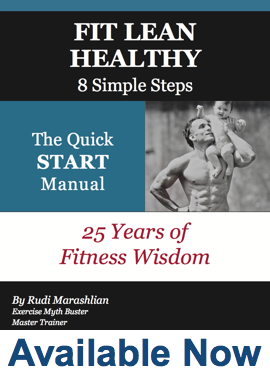Regular exercise is all-important to maintaining a healthy body, staying young and looking your best. The question is… how do you know if you’re working out too hard or not hard enough?
You’ve probably seen the term “MET” on the display while running on the treadmill, sweating it out on the stepper or gliding away on an elliptical machine. Those three letters, once understood, are very helpful in figuring out how hard you’re working at any time during your cardiovascular (or aerobic) workout.
MET stands for metabolic equivalent and reflects the amount of energy used by the body at rest. There’s more… 1 MET is the amount of energy used when the body is resting (think sitting on the couch watching TV or lying on the beach reading a book.
Walking briskly on a level surface at 4 miles per hour is 5 METs.
What this means is that walking briskly on a level surface at 4 miles per hour uses 5 times the energy of sitting and watching TV. MET is basically an easy way of describing the intensity of an activity, usually cardiovascular (or aerobic) activities by comparing any activity with a resting state (which is always 1 MET).
The advisory committee for the 2008 Physical Activity Guidelines designated the following aerobic intensity categories based on MET levels:
Light-intensity aerobic activity = 1.1 to 2.9 METs
Moderate-intensity aerobic activity = 3.0 to 5.9 METs
Vigorous-intensity aerobic activity = 6.0 or more METs
With this basic information, you now can determine how hard you’re working out when you’re on one of the cardio machines at the gym. If it says 3.0 METs in the little display, you’re training at a moderate intensity, if it says 8.5 METs then you’re in the vigorous-intensity zone.
Some MET Values For Common Cardiovascular Activities
- Walking (3.5 mph, 5.6 km/h) 4.3 METs
- Running (6 mph, 9.7 kn/h) 9.8 METs
- Swimming, freestyle, light to moderate effort 5.8 METs
- Water aerobics 5.3 METs
- Elliptical training, moderate effort 5.0 METs
You can see the MET values for other physical activities (some more obscure than you’ll find in the gym) here: http://sites.google.com/site/compendiumofphysicalactivities/Activity-Categories
Is There An Easier Method For Judging Workout Intensity Than Using METs?
It’s a good idea to understand METs but can get pretty complicated figuring out what intensity you’re working at (unless you happen to be training on a machine that shows METs). What’s an easier and more convenient way of figuring out the intensity of an activity (and this isn’t limited only to cardiovascular activities), keeping in mind it can be a very relative thing (what seems really high intensity to one person may not be so for another)?
A very simple tool is the “0 to 10 Scale” with 0 being how you’d feel if you were at rest and 10 being your absolute maximum effort. Here we’d have moderate effort being around a 5 or 6 out of 10 on this scale and vigorous effort being 7 or 8 on the scale.
You can read more about this scale and how to use the 0 to 10 Scale to increase your physical fitness in Rudi’s book, Fit Lean Healthy, 8 Simple Steps.



